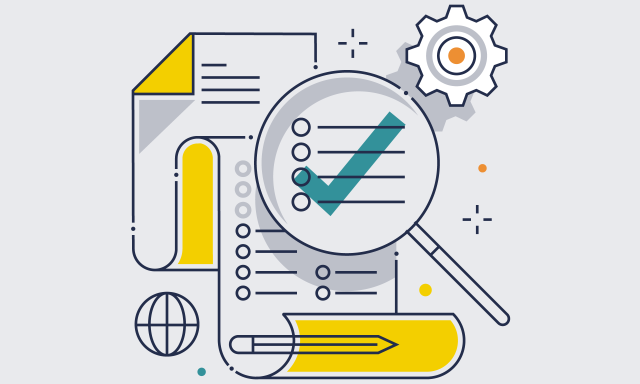

 Article
Article

 Early in 2019, who knew that a novel coronavirus would shut down businesses, communities, industries and economies in just weeks? A good business strategist understands that the future unfolds in ways that are unforeseeable as frequently as they’re predictable. But there are analytical frameworks you can use to yield insights for your organization.
Early in 2019, who knew that a novel coronavirus would shut down businesses, communities, industries and economies in just weeks? A good business strategist understands that the future unfolds in ways that are unforeseeable as frequently as they’re predictable. But there are analytical frameworks you can use to yield insights for your organization.

Written by
In this series, we detail four foundational analytical tools to help any organization future-proof its strategy. This installment follows Tool No. 1: Competitor Analysis, Tool No. 2: Environmental Analysis and Tool No. 3: Capabilities Analysis.
Who could have known in 2019 that a novel coronavirus would shut down businesses, communities, industries and economies all over the globe within a matter of weeks? Or that the shift to digitally powered online working, learning and communicating would be executed virtually overnight as a result?
A good strategist understands that the future unfolds in ways that are unforeseeable as frequently as they’re predictable. The Scenario Planning Tool has the benefit of forcing all decision-makers to set aside their assumptions about the future and to embrace contingency planning for multiple possibilities, for exogenous shocks and for crises, considering the risks and opportunities they may entail. Decisions influenced by multiple sources of uncertainty or in which a high-consequence, low-probability event might significantly influence the outcome are well suited for scenario planning.
This step-by-step framework empowers you to:
How do we do it?
Start by pulling together a diverse team of stakeholders with whom to brainstorm the key issues or the strategic decisions that you and your organization will need to make in an uncertain environment. Ask yourselves this: What are our chief concerns with respect to the future? Maybe it’s about how customers will purchase your goods or how their expectations or habits might change. Perhaps you’re concerned about how technology will affect your manufacturing capabilities or what changing environmental regulation could mean for your business. Whatever it is, set a time horizon for how these concerns might pan out. And set it far enough in the future that uncertainty is there, but not so far that you become prone to unrealistic or wishful thinking. Whether it’s 18 months or five years, remember to factor in economic and industry cycles — things like the approvals processes for the pharmaceutical sector, say.
Now bring in key and predictable trends. Look for supportable evidence and expert consensus around things like demographic or population trends, or geopolitical or environmental shifts that can be researched and ascertained. And brainstorm the key uncertainties, documenting them in a visual format so that all your stakeholders can see them.
Once you’ve identified the issue, time horizon, and key trends and uncertainties, distill them into the most important and uncertain for you and your organization. Narrow your list down to the most critical factors and form axes or matrices. For instance, a 2x2 matrix will use two different outcomes from two uncertainties to generate four different scenarios.
The uncertainties used in this approach should be as close to mutually exclusive as possible. Each quadrant is a scenario that should be given a memorable name.
Write out each scenario as vividly as possible with vivid headlines, descriptions and anecdotes to bring them fully to life and to help your stakeholders really envision such a future — a future that they may need to navigate. One simple and effective method is generating newsprint headlines as a small group. The group should write headlines they would expect to see at key times as the scenario progresses: 20, 50 and 100 percent of the way through.
The final step of scenario writing is filling in the details. It is the most creative stage — writing the story. The stories should focus on the criteria above and consider the trends consistent with the chosen time horizon. To ensure a rich vision, weave together the headlines and brainstorming.
You have defined your critical issues, uncovered the uncertainties and constructed multiple scenarios. The most important value-adding step remains: Ask yourself what the implications of each scenario might be for the strategy of your business. What might you need to change, reconfigure or add to your strategy in the event of X, Y and Z occurring?
The preceding is drawn from Future-Proof Your Strategy: 4 Essential Tools, a white paper that details foundational tools that can be used in strategic analysis — oftentimes the difference between a company’s success, resilience and failure.
Harris is an expert on both ethics and strategic management. His research centers on the interplay between ethics and strategy, with a particular focus on the topics of corporate governance, business ethics and interorganizational trust. Harris has written extensively on the topics of executive compensation and other governance-related topics.
Harris worked as a certified public accountant and consultant for several leading public accounting firms in Boston and Portland, Oregon, and served as the CFO of a small technology firm in Washington, D.C. He consults with several top financial services companies on the topics of strategic management, ethics and compliance.
He recently published The Strategist’s Toolkit, a primer on strategic thinking, with Darden Professor Mike Lenox. He also co-authored the recently published paper “Model-Theoretic Knowledge Accumulation: The Case of Agency Theory and Incentive Alignment” in the Academy of Management Review and a forthcoming paper titled “A Comparison of Alternative Measures of Organizational Aspirations” for the Strategic Management Journal.
B.S., M.Acc., Brigham Young University; Ph.D., University of Minnesota
Lenox’s expertise is in the domain of technology strategy and policy. He studies the role of innovation in helping a business succeed. In particular, he explores the sourcing of external knowledge by firms and this practice’s impact on a company’s innovation strategy. Lenox has a longstanding interest in the interface between business strategy and public policy as it relates to the natural environment; his work explores firm strategies and nontraditional public policies that have the potential to drive green innovation and entrepreneurship.
In 2013, Lenox co-authored The Strategist’s Toolkit with Darden Professor Jared Harris. His latest book,
Lenox is a prolific author; his most recent book, Strategy in the Digital Age: Mastering Digital Transformation, examines how digital technologies and services enable the creation of innovative products and services, as well as identifying new competitive positions.
B.S., M.S., University of Virginia; Ph.D., Massachusetts Institute of Technology